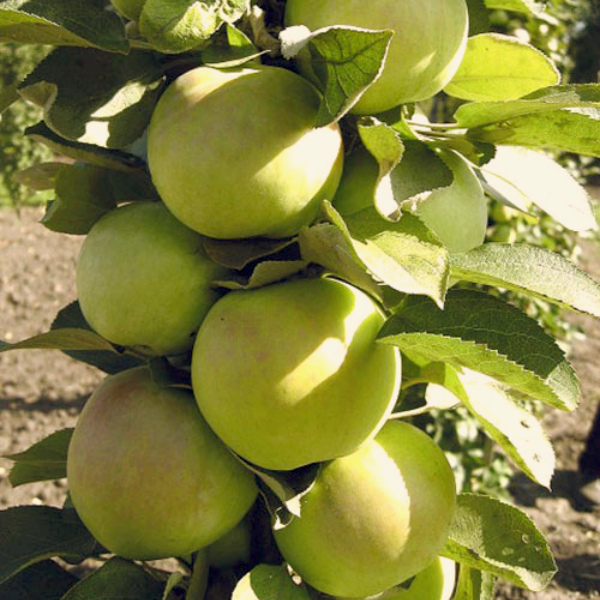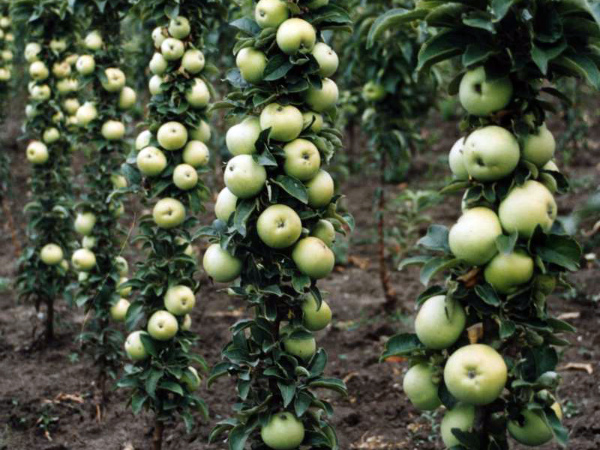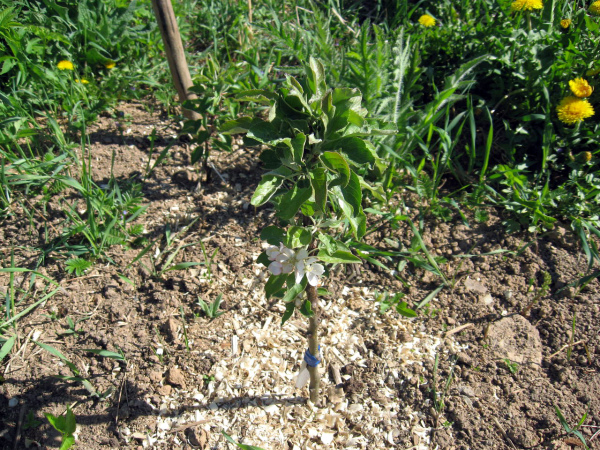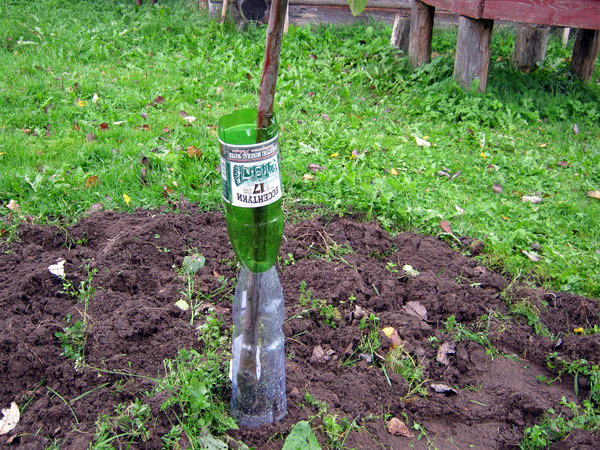Malyukha's columnar apple tree: planting and care
Content
Description of the variety
An apple tree of the "Malyukha" variety grows as a small tree up to 180 centimeters high. By definition, it refers to natural dwarf trees, representing an extremely successful symbiosis of a fruit and an ornamental tree. Suitable for cultivation in central Russia and the Urals, this variety is very popular with gardeners. Low growth, bright yellow-green apples and an incredibly neat appearance of the apple tree allows it to be used as an element of a garden composition along with ornamental shrubs and flowers.
Fruits are evenly distributed along almost the entire length of the trunk, which greatly facilitates harvesting, as well as caring for the tree itself. "Malyukha" is a fast-growing variety that gives its first harvest already 2 years after planting. Of course, you won't be able to pick a lot of apples due to the young age of the tree, but you will definitely get about 4.5 kilograms of fruit from each tree. Apple trees come into full force from the 5th year of cultivation, bringing annually 13-14 kilograms of apples from each tree.
The apples of the “Maluha” columnar apple are medium in size, weighing up to 250 grams. The peel is an elegant yellow-green color with almost no pronounced light red blush. The rind is rather thin, but at the same time strong, the waxy bloom is moderately pronounced. The pulp is light, juicy, with a sweet and sour taste and a persistent aroma.
The variety ripens in September, while the marketable qualities of apples can be preserved until January. There is no need to worry that the trees will freeze over the winter - "Malyukha" is distinguished by its stable frost resistance. Moreover, the trees of this variety are highly resistant to many fungal diseases, which makes them even more attractive for gardeners who are not very fond of using chemicals on fruit trees.
Landing technology
Planting and growing the variety is easy. It is better to prepare the planting holes in the fall, but the planting itself is carried out in the spring. You will need a hole about 50 centimeters deep because the root system of columnar trees does not go deep into the ground. The width of the hole should also be about 50 centimeters, but it varies from the span of the seedling's roots. The distance between trees should be about 50-60 centimeters, and between rows about 1 meter. This distance is quite enough so that the roots of neighboring trees do not interfere with each other during growth.
In the row spacing near the apple trees, you can plant other crops, for example, cereals.
In the spring, on the eve of planting, you will need annual apple seedlings, the roots of which must be carefully straightened. Fill the bottom of the pit with a mixture of rubble and sand about 25 centimeters. Mix the soil with superphosphate (80 grams), humus (4 kilograms) and potassium sulfate (40 grams), and pour into the pit.
Form a small mound in the hole, drive a support peg into it. Then place the seedling in the center of the mound, tie it to a stick and start filling the hole with earth. Tamp down the soil from time to time. After filling the hole halfway, pour half a bucket of water into it, then fill it to the brim.Always add a little extra soil to make a reserve in case of soil subsidence. Water the seedling again, but this time use 2 buckets of water. Tie the seedling to the support peg again.
Care features
The variety does not require specific care. It is important to monitor watering, especially in the first years of tree growth, to apply fertilizers in a timely manner, and also not to forget about preventive treatments with fungicides and insecticides. Despite being resistant to disease, you should never be reckless.
Fertilizers are best applied dry to the surface of the trunk circle or slightly deepening into the ground.
In the first year of cultivation, nitroammofoska is used in the amount of 50 grams per tree. After 4 weeks, feeding is repeated. This time you can use a solution of urea (2 tablespoons of urea per 10 liters of water). The third feeding occurs after another 4 weeks with nitroammophos or urea. Top dressing is combined with watering and subsequent mulching of the trunk circle so that moisture and nutrients remain in the soil longer.
The variety requires moderate watering. On light soils, trees are watered 2 times a week, but the irrigation schedule is different for different regions. The soil should be moist at a depth of 4-5 centimeters. So check the tree circle for moisture and you can build your own watering schedule.
In spring and autumn, trees must be treated with fungicides and insecticides of complex action in order to maintain high plant immunity. For the winter, it is recommended to wrap tree trunks with a netting to protect them from mice and hares.
Video "About columnar apple"
Columnar apple trees are not so common in personal plots, many simply do not know what to do with them. How to care for a tree-column, this video will tell.




